Women have long made important and indispensable contributions to the development of science and technology. History has recorded prominent names such as: Marie Curie, the first woman to receive the Nobel Prize, or Ada Lovelace, the world's first computer programmer. In modern times, women are increasingly asserting their pioneering role in many cutting-edge fields of science and technology such as artificial intelligence, biotechnology or robotics. According to a UNESCO report (2021), women contribute about 33% of the global scientific research force. This number is increasing thanks to policies promoting gender equality and widespread recognition from society.
With the continuous development of science and technology, women are not only users of technology but also innovators, leaders and shapers of the future. Their achievements not only promote scientific progress but also strongly inspire the younger generation. In order for these contributions to be widely recognized and have a more positive impact on society, the press plays an important role in raising public awareness of the position and role of women in science and technology.
The press is a powerful channel of information, not only conveying stories of women's success but also creating a space to honor and promote women's participation in Science, Technology, Engineering and Mathematics (STEM). Through articles, reports or media campaigns, the press helps to eliminate gender stereotypes, encourage women to confidently pursue their passions and promote policies that support equality in the field of science and technology. According to research by the World Economic Forum (2022), the media plays a role in shaping how society views women in science and technology, while encouraging female students to participate in STEM fields.
Women in Science and Technology: Current Situation and Challenges
Around the world, women have been making strong marks in the fields of science and technology, which are traditionally considered the strong points of men. A prominent example is Jennifer Doudna and Emmanuelle Charpentier, two female scientists who were awarded the 2020 Nobel Prize in Chemistry for their invention of the CRISPR-Cas9 gene editing technology, opening a new era for medicine and biotechnology (The Nobel Prize, 2020). In the field of information technology, Radia Perlman, an American computer scientist, is known as the "mother of the Internet" for inventing the Spanning Tree Protocol (STP), the foundation for the operation of modern computer networks (MIT Technology Review, 2014). These achievements show that women not only participate in but also lead important technological breakthroughs, playing an indispensable role in solving global challenges such as health , environment and cybersecurity.
In Vietnam, women are also increasingly asserting their role in research and innovation. According to statistics from the Ministry of Science and Technology, women account for about 44% of the total number of scientists, a high rate compared to the average in Southeast Asia (Ministry of Science and Technology, 2022). This shows that female intellectuals are gradually becoming a key part of research, teaching and innovation activities.
One of the typical examples is Prof. Dr. Nguyen Thi Lan, Director of the Vietnam National University of Agriculture, the first woman to hold this position in the school's more than 60-year history. She is a leading expert in veterinary medicine, with many research projects on vaccines and disease prevention and control in livestock and poultry. During the period when African swine fever was raging in Vietnam, her research team contributed to detecting, analyzing and providing solutions to control the disease, contributing to stabilizing the livestock industry.
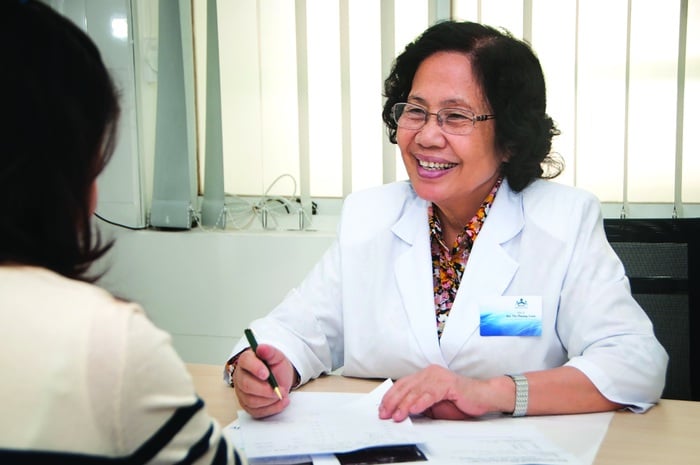
Professor Nguyen Thi Ngoc Phuong, the pioneer in bringing in vitro fertilization technology to Vietnam
Professor Nguyen Thi Ngoc Phuong is the only Vietnamese person to be honored with the Ramon Magsaysay Award - the "Asian Nobel Prize" - in 2024 for her great contributions to research on the harmful effects of Agent Orange/dioxin on human health, especially reproductive health. She is also a pioneer in bringing in vitro fertilization techniques to Vietnam and has made many contributions to the health care of Agent Orange victims.
In addition, many other female scientists also have outstanding initiatives with high applicability. Dr. Nguyen Thuy Ba Linh, an expert in the field of biomaterial technology, is the first woman in Vietnam to be honored with the TechWomen 100 award in 2024. She is notable for her research on polycaprolactone technology and founded the company SmileScaff, specializing in the application of biomaterials in medicine, helping to improve the speed of wound healing.

Dr. Nguyen Thuy Ba Linh, the first Vietnamese woman to receive the TechWomen100 award in 2024
Not only playing a leading role in research, women are also actively participating in innovation and science and technology startups. In 2022, Ms. Nguyen Thi Huong, Director of BioHiTech Startup Company, successfully developed organic cleaning products from beneficial bacteria, both protecting the environment and safe for consumers' health. Her project won a high prize at Techfest Vietnam and is in the process of commercialization in the ASEAN market.
However, the achievements of women in science and technology have not been adequately recognized. Although they make up 33% of the global scientific research workforce, this proportion is uneven across countries and fields. For example, in engineering and information technology (IT), the proportion of women is often much lower than in fields such as biology or medicine. Only 28% of students in STEM fields are female. This figure clearly reflects the gender imbalance in important areas of technological development and innovation (UNESCO, 2021a). In some developed countries, policies supporting gender equality in science and technology have achieved significant results. For example, in Nordic countries such as Sweden and Norway, women account for nearly 50% of researchers. However, in developing countries, this proportion is very low, even less than 20% in some regions of Africa or South Asia. This shows a large gap in access to education and career opportunities in science and technology globally. According to the Vietnam Women's Union (2024), women often hold low proportions in leadership positions in research departments and divisions; the proportion of heads of state-level research projects is only about 25%. In addition, the double burden of family and gender bias are still barriers that make it difficult for women to wholeheartedly pursue a long-term scientific career.
In addition, despite their significant contributions, women still face many barriers in accessing opportunities, promotion and research resources. Social prejudices such as "women are not suitable for engineering fields" and "science is a male field" still exist, affecting the confidence and career orientation of many female students and researchers.
The role of the press in changing social perceptions of women in science and technology
The press plays a particularly important role in disseminating scientific and technological knowledge to the public, while contributing to changing social awareness of the role of women in this field. In the context of the Fourth Industrial Revolution and digital transformation, mass media is not only an information channel but also a tool for social orientation, promoting gender equality and enhancing the position of women in research and innovation.
First, the press is a "bridge" between female scientists and the public. Through science columns, interviews, television programs or news bulletins, the press can widely introduce the images of outstanding female intellectuals, thereby inspiring the younger generation, especially female students, to pursue STEM. For example, in 2023, many major press agencies in Vietnam such as VTV, Nhan Dan Newspaper, Science & Development Newspaper, and Vietnam News Agency carried out special topics on Vietnam Science and Technology Day (May 18), honoring female scientists with outstanding contributions, such as Prof. Nguyen Thi Ngoc Phuong or Prof. Dr. Nguyen Thi Kim Thanh, a leading expert in nano-biotechnology in the UK.
Second, the media has the potential to change social perceptions by breaking down long-standing gender stereotypes in the field of science and technology. Communicating women’s achievements in science and technology, stories of overcoming gender barriers, and initiatives to promote equality in research helps the public understand that scientific competence is not dependent on gender, but is the result of dedication and creativity. UNESCO research (2021a) shows that effective media campaigns can contribute to a 20%-30% increase in female students’ interest in STEM, especially when the content is relatable and illustrated with real-life examples.
Third, the press is a channel for monitoring and criticizing policies, thereby creating social pressure to improve the working and research environment for women in the field of science and technology. By reflecting the reality of gender inequality, lack of support policies, and discrimination in access to topics or leadership positions, the press helps the issue become part of the public agenda, contributing to promoting action from management agencies.
Finally, in the digital age, journalism also plays a role through multimedia platforms such as social networks, podcasts, short videos, etc., helping science and technology communication content and gender equality reach a diverse audience, especially young people. Communication campaigns such as "She Makes Science" (coordinated by the Organization for European Cooperation and Development - OECD) are a typical example of integrating journalism, social media and real people - real work images to build social inspiration and promote behavioral change (UNESCO, 2022).
Typical media campaigns about women in science and technology
Around the world, many communication campaigns about women in science and technology have been successfully implemented, contributing to raising public awareness and promoting social behavior change. A typical example is the "For Women in Science" campaign initiated by UNESCO and the L'Oréal Group since 1998. Each year, this program honors five outstanding female scientists from different continents, and supports scholarships for hundreds of young female researchers. Not only stopping at awarding awards, the campaign also implements a series of communication activities - such as video interviews, photo exhibitions, series of articles and mentoring networks - to spread the image of women in science, inspire young people and promote gender equality in the global science ecosystem (For Women in Science, 2022).
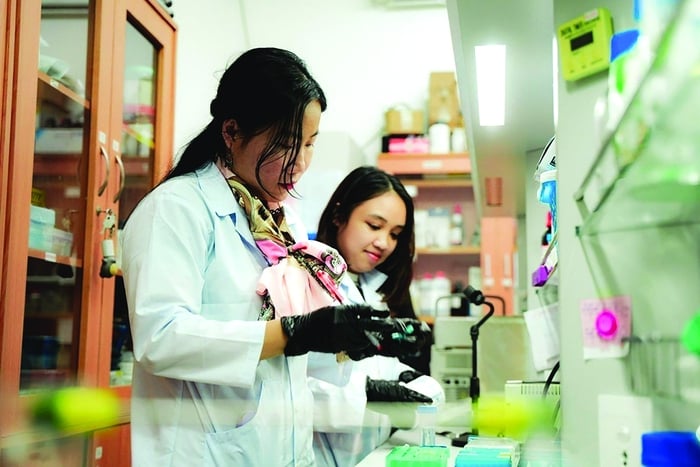
Dr. Ha Thi Thanh Huong (left) and colleagues in the laboratory. Dr. Ha Thi Thanh Huong is one of three scientists to receive the L'Oréal - UNESCO "For Women in Science" Award in 2022.
In the US, the "If/Then" campaign, sponsored by Lyda Hill Philanthropies, is an innovative effort to bring images of women in STEM closer to the public through popular culture. The campaign collaborates with content creators, filmmakers, YouTubers, museums and schools to build real-life stories, 3D models and positive images of women in science. Notably, the "If/Then Collection" is currently the world's largest collection of images and videos about women in STEM, widely used in more than 100 schools and educational institutions in the US (If/Then Initiative, 2022).
In Asia, the "Girls in STEM" campaign implemented by Plan International in many countries such as the Philippines, Thailand and Indonesia has used social media, community events and cooperation with press agencies to promote female students' participation in the STEM field. Research evaluating the effectiveness of the program in the Philippines showed that the rate of female students interested in careers in science and technology increased by 18% after 6 months of exposure to media content and experiential activities (Plan International, 2021).
In Vietnam, one of the typical programs is "For the development of women in science" organized by the Vietnam Women's Union and UNESCO since 2009. This event not only honors female scientists with many contributions but also strongly communicates on mass media such as VTV, VOV, Science & Development Newspaper, contributing to changing social awareness about the role of women in research and innovation. For example, in 2021, the communication campaign surrounding the award ceremony attracted more than 1 million views on the digital platforms of the Ministry of Science and Technology and more than 50 articles deeply reflecting the portrait of female scientists.
Another prominent campaign is "Women's Entrepreneurship" implemented by the Vietnam Women's Union since 2017. This is one of the key activities of the Project "Supporting Women's Entrepreneurship in the 2017-2025 period" approved by the Prime Minister. Through startup competitions, communication activities on social networks, television reports and photo documents, the campaign has created a forum for women to demonstrate their creativity, especially in the field of technology and digital. In 2023, the program recorded more than 2,000 participating ideas, of which more than 30% were projects with technological innovation elements and most were widely introduced through local and central press channels.
From the above examples, it can be seen that the press and media are not simply tools for reflection, but also a strong force for promoting the role of women in science and technology. Designing comprehensive communication campaigns - combining inspirational images, scientific data and digital platforms - is a direction that needs to continue to develop at both the national and global levels.
Solutions to increase women's presence in science and technology through communication
From the analysis of the role of the press and the practices implemented, it can be seen that the media is a key tool in raising public awareness, changing gender stereotypes and promoting women’s participation in the field of science and technology. However, to maximize effectiveness, a system of synchronous solutions is needed, both at the policy level, the press and scientific organizations.
First, develop a long-term communication strategy on women and science and technology. Media agencies need to be oriented to develop a long-term, systematic communication strategy to promote a positive image of women in science. Instead of sporadic campaigns based on events, it is necessary to create regular series of articles, in-depth reports, television programs or podcasts focusing on the stories of women in research, invention and innovation. These forms of communication should be diverse in content and language, targeting young audiences to create a sustainable ripple effect.
Second, strengthen training for reporters and editors on gender equality. The Ministry of Science and Technology can organize training courses and compile a handbook to guide the press in writing about gender and science and technology. This helps avoid stereotyped, empty information or reinforcing gender stereotypes in the communication process.
Third, encourage female scientists to participate in communication. One of the major barriers is the "silence" of female scientists themselves in the mass media. Therefore, it is necessary to encourage and train women in science in speaking skills, presenting research results, writing scientific popularization articles or participating in communication forums. Organizations such as the Vietnam Association of Women Intellectuals, universities and research institutes need to promote their role in connecting female scientists with the press. Improving communication capacity for female scientists not only helps them to confidently share but also contributes to creating a new model of intellectual women in modern society (UNESCO, 2024).
Fourth, build a network of communication - science - social organizations. A strategic solution is to establish a cooperative network between press agencies, scientific organizations and women's organizations to build a specialized communication channel on women in science and technology. These networks can jointly organize press awards, science communication events, and public forums on gender and science and technology. In fact, the coordination between the Vietnam Women's Newspaper and the Vietnam Women's Union in the "Women Intellectuals for the Future" campaign has contributed to raising the status and voice of women in society.
Finally, it is necessary to integrate indicators and communication activities on gender equality in science and technology into the National Strategy for Science and Technology Development. Regulations on the proportion of news articles, broadcasting time or communication budget for the topic of women and science and technology in national target programs will create institutional guarantees so that this issue is not overlooked or interrupted.
Source: https://phunuvietnam.vn/thay-doi-nhan-thuc-xa-hoi-ve-phu-nu-trong-khoa-hoc-cong-nghe-thong-qua-truyen-thong-20250617121118408.htm








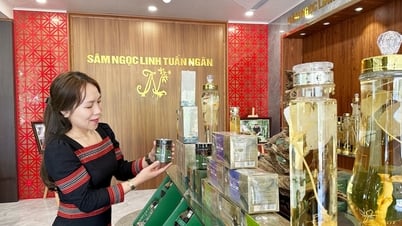

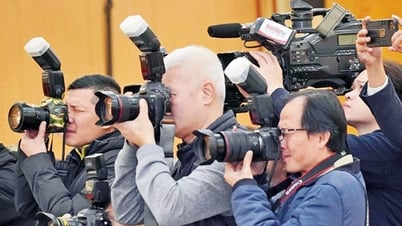



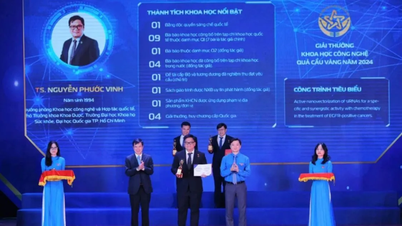

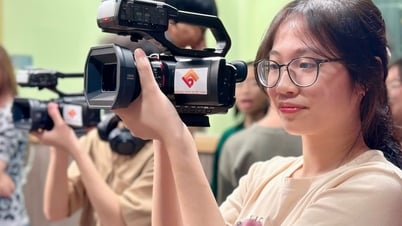








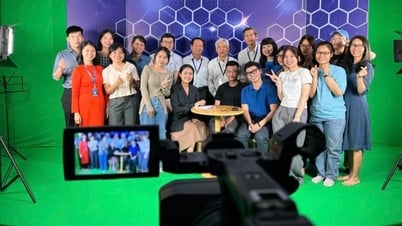

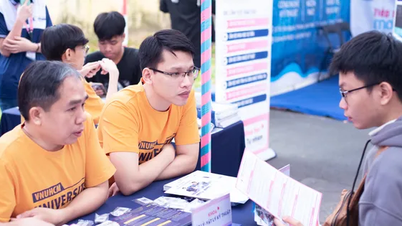
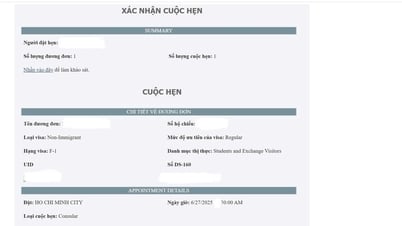




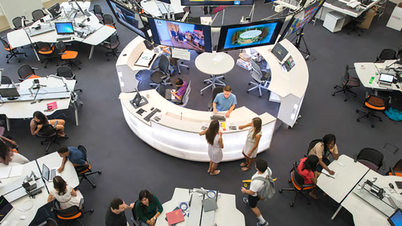
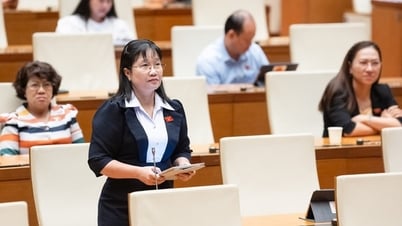
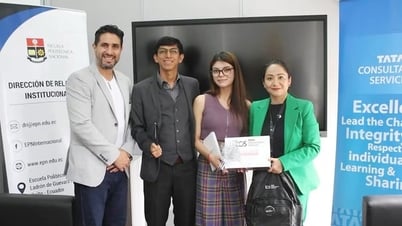
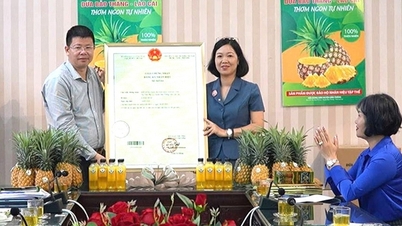



![[Photo] Overcoming the heat, practicing to prepare for the parade](https://vphoto.vietnam.vn/thumb/1200x675/vietnam/resource/IMAGE/2025/6/21/b93392e8da8243b8a32040d19590e048)





















![[Maritime News] Wan Hai Lines invests $150 million to buy 48,000 containers](https://vphoto.vietnam.vn/thumb/402x226/vietnam/resource/IMAGE/2025/6/20/c945a62aff624b4bb5c25e67e9bcc1cb)














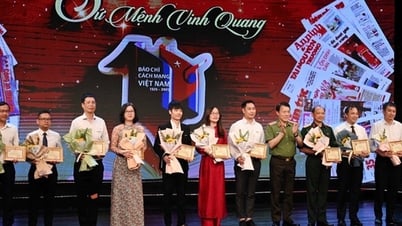
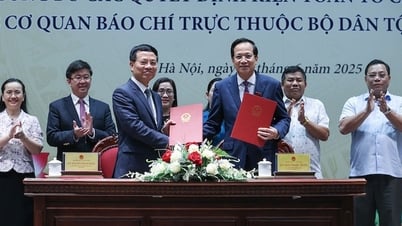








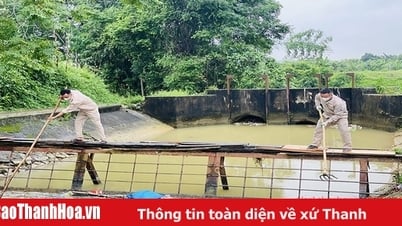

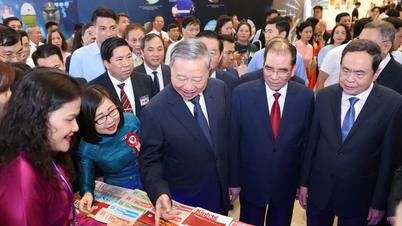













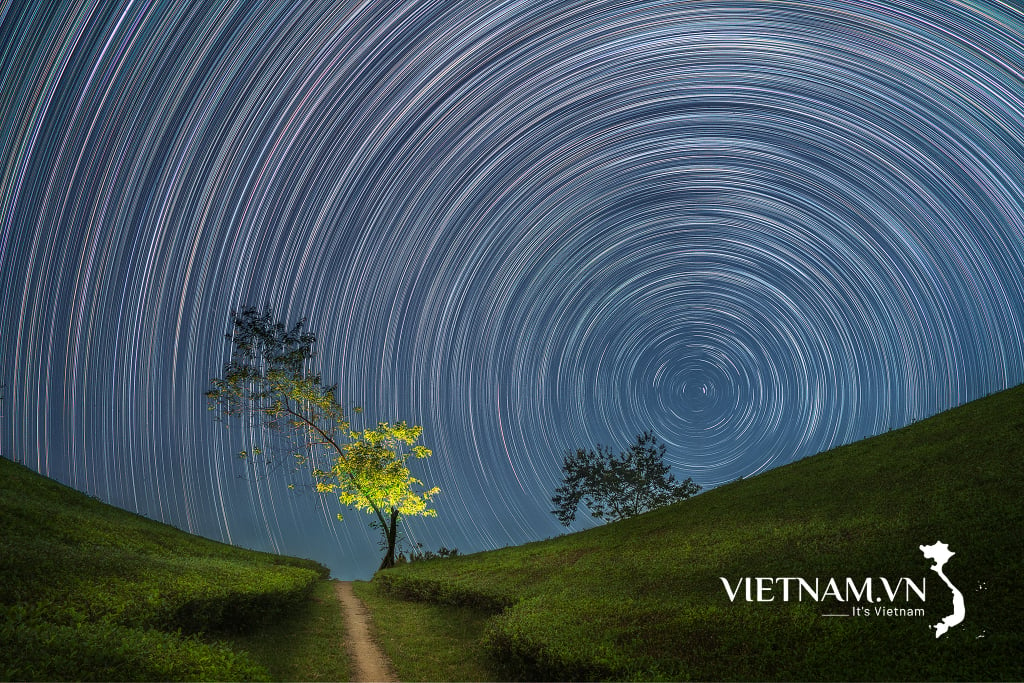

Comment (0)